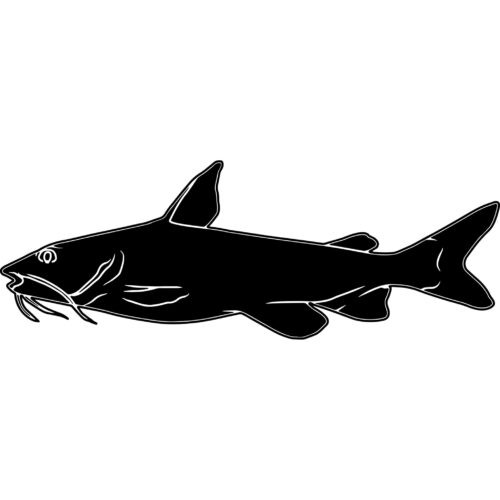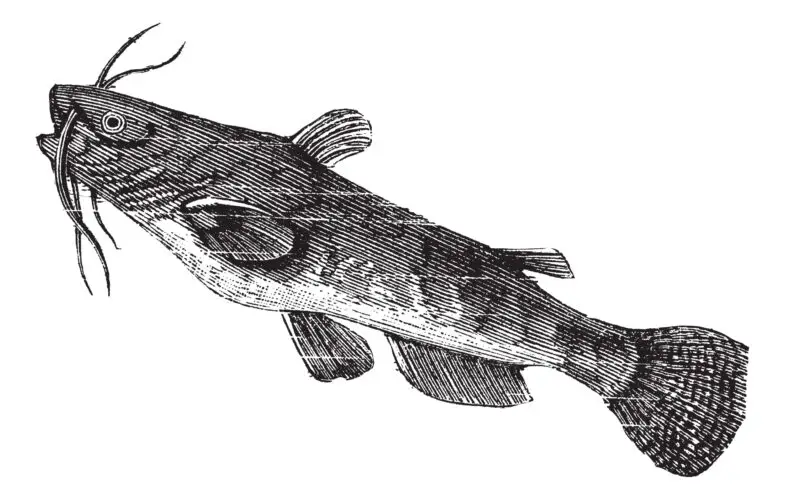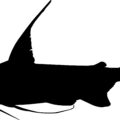Catfish and hardhead catfish both swim in the diverse world of aquatic creatures, sharing similarities and differences that distinguish them within the larger group of fish. Catfish is a term that broadly refers to a large group of fish known for their barbels, which resemble a cat’s whiskers. These fish are found in freshwater environments around the world and vary widely in size and behavior. Some species of catfish are known for their ability to walk on land for short distances or their unique armor-like skin.
On the other hand, the hardhead catfish is a specific species found primarily in the brackish and salty waters of the western Atlantic Ocean and Gulf of Mexico. This species is recognized by its elongated body, flat head, and the hard, bony plates that cover its head. Hardheads possess sharp spines on their dorsal and pectoral fins, which they can use defensively. They are often considered less desirable by anglers due to their strong odor and less palatable flesh compared to other catfish species.
Understanding the differences between catfish and hardhead catfish involves examining their habitats, physical characteristics, and human interactions. While ‘catfish’ encompasses a diverse group, hardhead catfish refers to a specific type that has adapted to thrive in different ecological niches. These distinctions highlight the adaptive nature of fish in various environments and contribute to the biological diversity observed in aquatic ecosystems.

Classification and Species Overview
The distinctions between catfish species and the hardhead catfish, in particular, are rooted in their unique taxonomical classifications. Exploring these differences sheds light on their biological and ecological roles within their respective environments.
Defining Catfish
Catfish (Siluriformes) are a diverse group of fish known for their barbels, which resemble a cat’s whiskers. Species within this order are spread across the globe, with adaptations that have allowed them to thrive in various aquatic habitats. The name “catfish” encompasses numerous species, from the small and innocuous to the larger predators of the underwater world.
- Classification:
- Kingdom: Animalia
- Phylum: Chordata
- Class: Actinopterygii
- Order: Siluriformes
Most catfish species have a scaleless skin, a feature that distinguishes them from many other fish. They also possess a strong, often venomous, spine on their dorsal and pectoral fins.
Identifying Hardhead Catfish
The hardhead catfish, scientifically named Ariopsis felis, is native to the northwestern Atlantic Ocean, predominantly found in the coastal waters of the United States and Mexico, especially the Gulf of Mexico. This species presents specific characteristics that differentiate it from other catfish.
- Features of Hardhead Catfish:
- Distinctive head shield
- Barbels under the mouth
- Lack of scales
- Habitat: Brackish and coastal marine waters
Ariopsis felis is commonly encountered by anglers and is known for its resilience in a variety of saline conditions. While related, it is distinct from the gafftopsail catfish, another species within the same family noted for its sail-like dorsal fin.
Anatomical Differences
Catfish and hardhead catfish share a general morphology consistent with their belonging to the same scientific order. However, they exhibit anatomical distinctions that differentiate the species, such as the characteristics of their fins, skin, and barbels.
Distinctive Features of Catfish
Dorsal Fin: Catfish typically have a prominent dorsal fin that is pivotal for stability when swimming, but the number of dorsal fin rays varies by species.
Barbels: Sometimes referred to as ‘whiskers,’ catfish are named for their barbels, which are sensory organs that help in detecting food. Catfish usually have four pairs, prominently surrounding the mouth.
Pectoral Fins and Spines: These fins aid in maneuverability, and most catfish have a sharp spine at the leading edge that can lock into place as a defense mechanism.
Bony Plates: Unlike hardheads, some catfish species possess bony plates called scutes for protection, rather than scales.
Tail: The shape of the tail in catfish can range from slightly to deeply forked, aiding in quick bursts of speed when needed.
Unique Traits of Hardhead Catfish
Dorsal Spine: Hardhead catfish have a hard, pointed spine at the front of their dorsal fin, which can be venomous, causing irritation and pain upon contact.
Skin: Hardhead catfish lack scales but have a tough, leathery skin that provides protection from predators and the environment.
Whiskers: While similar to other catfish, the barbels of a hardhead catfish are slimmer and less pronounced. These whiskers assist with navigation and locating food on the murky seafloor.
Pectoral Fin and Pectoral Spine: The hardhead catfish boasts a robust pectoral spine, which, like the dorsal spine, can be venomous.
Forked Tail: Hardhead catfish have a deeply forked tail which grants them exceptional swimming ability in their primarily saltwater habitats.
Habitat and Distribution
Catfish and hardhead catfish have distinct habitats and geographical ranges, with catfish generally favoring freshwater environments and hardhead catfish being found in saltwater locations along the Atlantic coast.
Catfish Habitats
Catfish are primarily found in freshwater ecosystems such as rivers, lakes, and streams. They thrive in areas with muddy or sandy bottoms where they can burrow and search for food. While they are widespread in various freshwater habitats, river mouths and brackish estuaries can also host certain species of catfish, as they can tolerate a degree of salinity.
Hardhead Catfish Range
The hardhead catfish, known as a saltwater species, is common in the Gulf of Mexico, the western Atlantic Ocean up through the Florida coast, and as far north as Massachusetts. They populate coastal waters including estuaries and regions near shorelines. The shores of Texas, the East Coast, and South Carolina are well-known areas for the hardhead catfish. Their range extends to the wider Atlantic Coast, where they occupy sandy and muddy substrates in both marine and brackish water environments.
Behavior and Diet
Both catfish and hardhead catfish have distinctive feeding habits and reproductive behaviors essential to understanding their roles in the marine ecosystem.
Feeding Habits
Catfish are opportunistic feeders with a varied diet. They primarily consume:
- Small fish
- Crabs
- Shrimp
They rely on their barbels to detect prey and are also known to eat:
- Algae
- Seagrasses
Hardhead catfish, on the other hand, have a preference for marine invertebrates, such as:
- Crustaceans (shrimp, crabs)
- Mollusks (gastropods)
- Sea cucumbers
They are less likely to consume plant matter and are more specialized in their feeding habits compared to other catfish. Both species are commonly used as bait by fishermen, with cut bait from species such as squid, chicken, or larger fish used to attract them.
Reproductive Behavior
During the spawning season, catfish exhibit unique behaviors. Catfish such as the hardhead catfish engage in mouthbrooding, where the female carries the fertilized eggs in her mouth to protect them until they hatch. The reproductive process includes:
- Selection of a mate
- Egg fertilization
- Protection of the young
The sail catfish, a closely related species, also exhibits similar mouthbrooding behaviors. Both species’ parental care ensures higher survival rates for their offspring in their natural habitats.

Fishing and Cooking
Fishing for catfish and hardhead entails different techniques and tackle, and their culinary uses also vary, making each species unique in its handling and preparation.
Fishing Techniques
When fishing for sea catfish, such as hardhead and sail cats, anglers often use cut bait like shrimp, squid, or fish pieces because these species are opportunistic feeders. Heavy tackle is not required and a simple setup with a good fishing rod, reel, and a jig or streamer can suffice. They are not typically sought after as game fish, but they provide an engaging experience due to their tenacious nature.
Sea Catfish:
- Bait: Shrimp, squid, fish pieces
- Tackle: medium rod, reel, lines and weights appropriate for current
- Techniques: Bottom fishing, jigging
Preparation and Culinary Uses
Once the catfish are caught, proper handling is crucial due to their sharp spines, which can cause injury. Wearing gloves is recommended. For cooking, sea catfish, including hardhead, are considered table fare to some, although not prime. Their fillets can be prepared through frying or baking. A common preparation method involves coating the fillets in flour or a seasoned batter before frying them until golden brown. This simple approach highlights the firm texture and mild flavor of the fish.
Sea Catfish Culinary Uses:
- Handling: Use gloves to handle; watch out for sharp spines
- Cooking Methods: Frying, baking
- Preparation: Coat fillets in flour or seasoned batter, fry until golden brown
Conservation Status
The conservation status of both catfish and hardhead catfish is critical to understanding their environmental impact and the need to protect them. Least Concern is the classification given to organisms that do not fall into the categories of critical endangerment or nearing extinction. This status implies that the populations of both species are currently stable. Research indicates that they have healthy population levels in their native habitats.
For catfish, which encompass a wide range of species around the world, many fall under the Least Concern category. However, their status can vary depending on the specific species and geographical location. They are predominantly found in freshwater environments, and their widespread presence suggests resilient populations.
- Ictalurus punctatus, commonly known as the channel catfish, is listed as Least Concern.
- The blue catfish, Ictalurus furcatus, also shares this status.
Hardhead catfish, specifically Ariopsis felis, are native to the Gulf of Mexico and the Atlantic Ocean. Their populations are monitored but do not currently raise significant conservation concerns. They are similarly categorized under the Least Concern classification.
The monitoring of both catfish and hardhead catfish populations is essential. It ensures that the species are not at risk and informs future conservation efforts. Conservationists and researchers continue to gather data to support the preservation of these aquatic species and maintain their role in the ecosystem.











